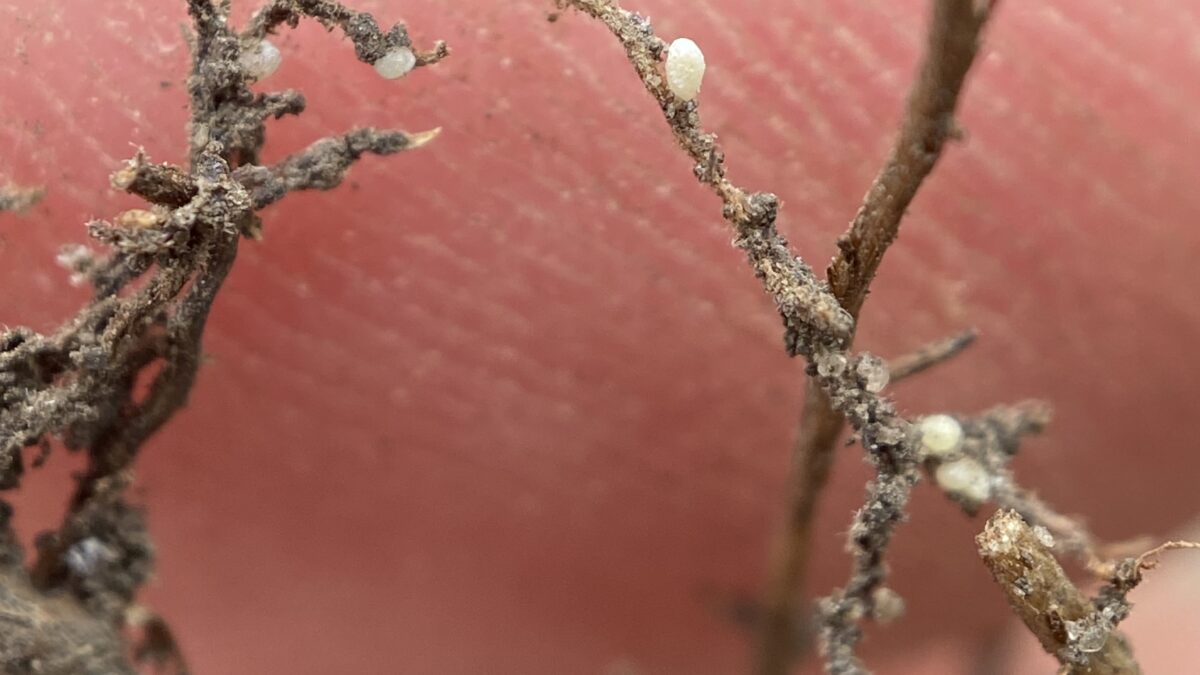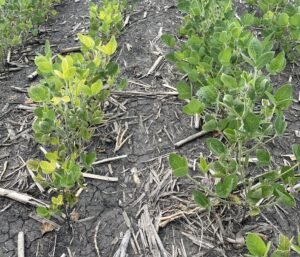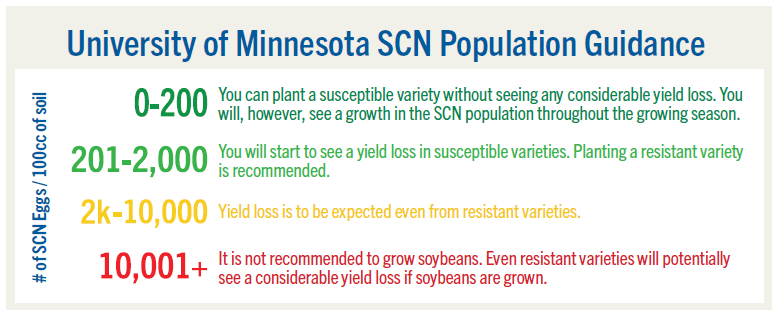Are You Losing $250/acre Without Knowing It? Manage Your Cyst Problems Before They Control You!

Soybean Cyst Nematode (SCN) is the single-greatest yield robber in soybeans in the Midwest. Most farmers don’t know they have SCN, don’t know their current cyst count, and are not taking the necessary steps to limit yield loss and decrease populations.
The best real-life example of SCN in my career is from my time working for a co-op in West Central Minnesota. I had just finished helping to combine our soybean plot. While compiling the data, I I realized our top four yielders were all Peking varieties and were, in fact, the only Peking varieties in our plot that year (the remainder utilizing the PI 88788 gene.) There had been some conversations the winter prior that resistance to PI88788 was becoming more prevalent, but my results seemed far more dramatic than what had been discussed.

SCN symptoms to this level (left) have already dropped yield by 50%. Managing a low population is much cheaper than reducing a high one.
I decided to go out and sample the field. I was blown away to see our numbers at 17,500 SCN per 100cc’s of soil. For reference, the University of Minnesota suggests that you should not plant soybeans at 10,000 SCN per 100cc of soil!
The most concerning part of this experiment was not just the numbers that came back but that this field showed no greater signs of distress than any other field within a several-mile radius. After talks with the grower, we decided to do another test on a field only 2 miles away and found SCN numbers of 22,500, confirming my belief that this issue was not just localized to his one field or section. It also furthered my belief that it was an unrecognized and widespread problem throughout our region.
So, what’s my point in this long-winded story of cyst pressure? Well, to sum it up – there are cysts around, and if they aren’t a problem for you now, they will be. It is more of a conversation of “not if you will have a SCN population in your field, but when.”
Even in the short time I have been in Kindred, ND, an area widely believed to have low SCN populations, I have already found SCN numbers of over 10,000. They are the silent killer of soybean yields, and according to Iowa State University, they can cause up to a 40% yield drag without showing any significant above-ground visual signs.
So, how do we combat this issue?
1. Test for SCN consistently
Testing for soybean cyst nematode in ND, SD, and MN is free if you go through the proper channels. The ND Soybean Council offers free sample bags, which can be picked up at your local county extension office. The SD Soybean Research and Promotion Council sponsors this effort there, and you can find a SCN Sample Submission form on the SDSU Plant Diagnostic Clinic website. The MN Soybean Research and Promotion Council is sponsoring SCN sampling, also. Bag labels and sampling instructions can be received by filling out the SCN sample form on the University of
Minnesota Extension website.
2. Plant beans with the Peking gene when necessary
As my story showed, PI 88788 resistance isn’t just a problem in the I-states. It is something that has been moving north with the growing SCN populations. This story isn’t meant to scare anyone from using PI 88788 beans; I believe they will be a vital tool in this fight with SCN. But by properly using both genes, we will get more effective years with the PI 88788 gene and avoid prematurely breeding resistance to Peking varieties.
3. Manage your crop rotation with SCN populations in mind.
Cysts don’t like to go away. Cyst eggs can lay dormant in their mother’s hardened, case-like body for up to ten years before hatching and damaging your soybean crop. That’s not to say that your entire SCN population is going to live for 10 years dormant in your soil, but there is a chance for a percentage of them to. To avoid a possible long-term issue with SCN in your fields, it is best to keep track of your SCN population and adjust your crop rotation or variety selection as needed.












